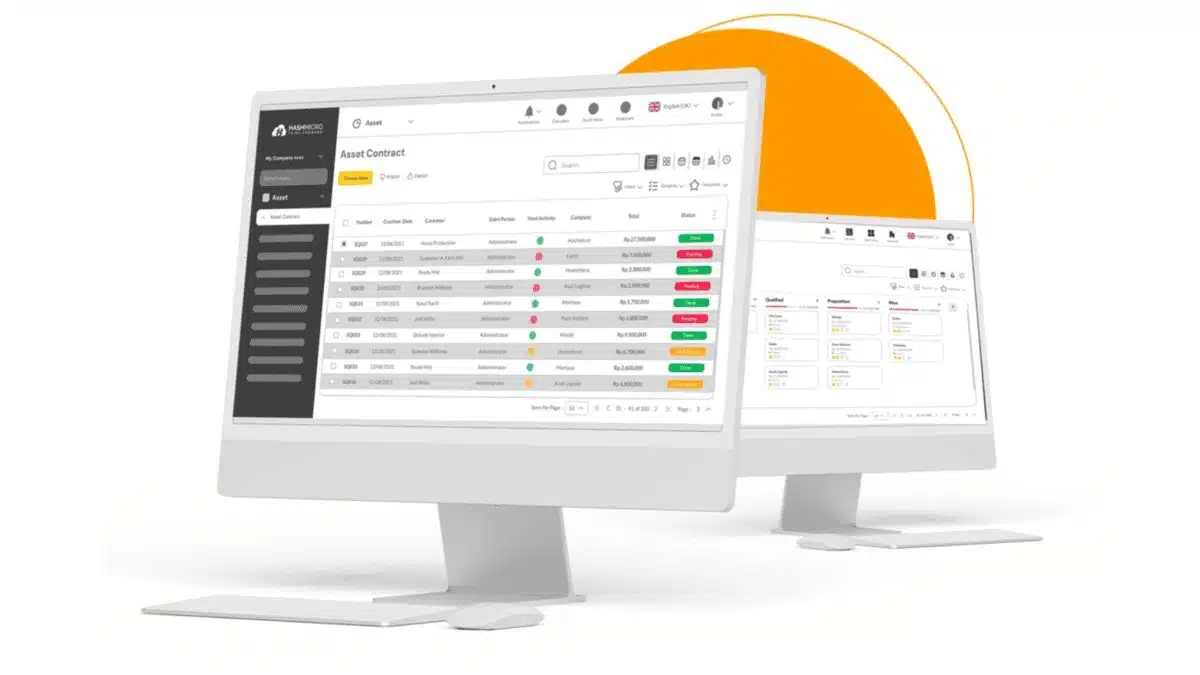Ever struggled to pinpoint where your business money is tied up? Managing assets is tough, especially when balancing long-term investments like equipment and short-term assets like cash or inventory. Many Filipino business owners face confusion, leading to missed growth opportunities or cash flow problems.
Knowing the difference between fixed and current assets is crucial. Without this clarity, you risk poor financial decisions and operational setbacks. Let’s break down these asset types and show how mastering them boosts your financial control. Keep reading!
Key Takeaways
|
Table of Contents

What is an Asset?
Assets are resources a business owns or controls to generate future economic benefits, including machinery, inventory, and patents. Understanding and categorizing these assets is crucial for strategic decision-making and investment planning. Proper asset management helps optimize their use, ensuring long-term growth and financial stability.
On the balance sheet, assets are divided into two main categories: current assets and fixed assets. This classification allows business owners and investors to assess liquidity, operational efficiency, and the company’s ability to meet short-term and long-term obligations.
An Overview of Asset Categories
Every business, regardless of size or industry, has assets contributing to its operations and financial standing. Assets come in different forms, and understanding these categories is key to effective asset management. Fixed and current assets are two primary types that business owners should be familiar with.
Business owners need to know not just what assets they own but also how they are classified. Asset management systems can greatly assist in this process, providing a structured way to plan and understand the company’s financial health. Let’s break down what assets are and how they are classified on the balance sheet to provide a clearer picture.
Also Read: Top Asset Management Software for Manufacturing
What Are Current Assets?
Current assets are vital short-term resources that a business can quickly convert into cash within one year. They are crucial for managing day-to-day operations, covering immediate expenses, and maintaining liquidity. This liquidity allows a business to handle seasonal demands, market fluctuations, and unforeseen expenses effectively.
For instance, managing assets in specialized settings, such as school asset management, requires attention to these liquidity aspects to ensure that educational institutions can respond to academic needs and opportunities efficiently.
The importance of current assets lies in their liquidity, providing the business with the flexibility to respond quickly to market opportunities or challenges. Proper management of current assets ensures that a company can meet its short-term financial obligations and invest in growth when necessary.
Examples of current assets
Current assets are vital to the smooth operation of any business. They include resources that can be converted into cash within a year, helping businesses cover short-term obligations. Understanding these assets is crucial for managing cash flow and ensuring financial stability.
- Cash: The most liquid asset, offering immediate spending power for everyday business needs.
- Accounts Receivable: Money owed by customers boosts cash flow when collected, which is especially important for retail businesses.
- Inventory: Products held by businesses to meet customer demand, essential for generating sales and revenue.
- Marketable Securities: Short-term investments that can be quickly converted to cash, providing a buffer for unexpected expenses.
By managing these assets effectively, businesses can ensure a steady cash flow and maintain financial stability. Proper asset management helps meet customer demands, cover immediate expenses, and plan for future growth.
What are Fixed Assets?
Fixed or long-term assets are resources a business uses over a longer period, usually more than a year. These assets include property, plant, and equipment (PP&E), such as office buildings, machinery, and vehicles. Businesses often invest in fixed assets to support production, expand operations, and enhance efficiency.
Examples of fixed assets
Fixed assets are long-term resources that support a business’s core operations and provide ongoing benefits. They are crucial investments, often involving significant upfront costs, that help drive productivity and revenue generation.
- Machinery: Essential for manufacturing companies, enabling production processes and enhancing operational efficiency.
- Office Equipment: Items like computers, printers, and furniture that support daily business activities and improve workplace functionality.
- Vehicles: Used for deliveries, logistics, and transportation, crucial for companies involved in goods distribution.
- Real Estate: Includes office buildings or factories, offering a stable base for business operations and growth.
Unlike current assets, fixed assets depreciate over time, reflecting their gradual loss in value. However, they remain valuable for a business by contributing to productivity and maintaining market competitiveness.
Fixed Assets vs Current Assets
The key differences between current and fixed assets lie in their liquidity, usability, and accounting treatment.
| Aspect | Current Assets | Fixed Assets |
|---|---|---|
| Liquidity | Highly liquid; can be quickly converted into cash. | Less liquid; used for long-term business operations. |
| Usability | Meant for short-term needs (e.g., cash, inventory). | Supports long-term operations (e.g., machinery, buildings). |
| Accounting Treatment | Do not depreciate; use for short-term purposes. | Subject to depreciation, spreading the cost over the useful life. |
Liquidity refers to how quickly an asset can be converted into cash for business use. Usability distinguishes whether the assets are short-term or support long-term business operations. Accounting treatment covers how it is recorded in financial statements, including applying depreciation for fixed assets.
Special Considerations in Asset Management
Effective asset management is vital for financial health and investment potential. A balanced mix of current and fixed assets improves cash flow, attracts investors, and helps Philippine businesses adapt to market changes.
- Impact on Financial Health: Properly managed assets improve a company’s creditworthiness, enabling better access to investment opportunities.
- Investment Potential: Understanding the relationship between current and fixed assets helps business owners plan investments and manage risks.
- Market Adaptation: Careful monitoring of assets allows businesses to adapt to changing market conditions and economic climates.
Strategic asset management involves making informed acquisition, maintenance, and disposal decisions. Investing in fixed assets for growth or liquidating current assets to maintain liquidity ensures long-term profitability and a strong financial foundation.
HashMicro’s Asset Management Software to Minimize Errors in Classifying Assets
Managing assets can be tricky, especially when distinguishing between current and fixed assets. Misclassifying them can lead to inaccurate financial reports and poor decisions, hurting a company’s growth. That’s where HashMicro’s Asset Management Software steps in, offering Philippine businesses a streamlined solution for accurate asset tracking and improved stability.
Some of the features of our software are:
- Comprehensive Cost Reporting: Provides detailed insights into asset costs, aiding in financial planning and budgeting.
- Asset Maintenance Budget: Set and monitor maintenance budgets, ensuring cost-effective operations and prolonging asset life.
- QR Code Scanning for Facilities Request: Streamlines asset maintenance by enabling quick scanning for service or repair requests.
- Asset GPS Tracking: Offers real-time tracking of assets, improving security and management efficiency across various locations.
- Integrated Accounting for Depreciation Tracking: Automatically tracks asset depreciation, ensuring accurate financial records and compliance.
By using HashMicro’s Asset Performance Management Software, businesses can minimize classification errors and streamline asset management. This solution supports informed decision-making, enhancing overall financial health and operational efficiency. Click here to see other asset management software recommendations.
Conclusion
Understanding and managing the differences between fixed and current assets is essential for business success. Current assets offer short-term liquidity, while fixed assets support long-term growth and stability. By managing these assets effectively, Filipino businesses can enhance cash flow, profitability, and overall financial health.
Classifying assets isn’t just about accounting; it’s a strategic move that shapes your business’s future. Balancing current and fixed assets helps build a solid financial foundation and meet market demands. Get started today with HashMicro’s Fixed Asset Management Software—click here for a free demo!
Frequently Asked Question
-
What is the difference between a fixed asset and a current asset?
Fixed assets are long-term resources like equipment used for over a year. Current assets are short-term, such as cash or inventory, converted into cash within a year.
-
What is an example of a fixed asset?
A fixed asset example is manufacturing machinery supporting long-term business operations. These assets depreciate over time but are crucial for production and growth.
-
What is an example of a current asset?
Cash is a common current asset, providing immediate liquidity for daily business operations. Other examples include accounts receivable and inventory, which can be easily converted into cash within a year.




































